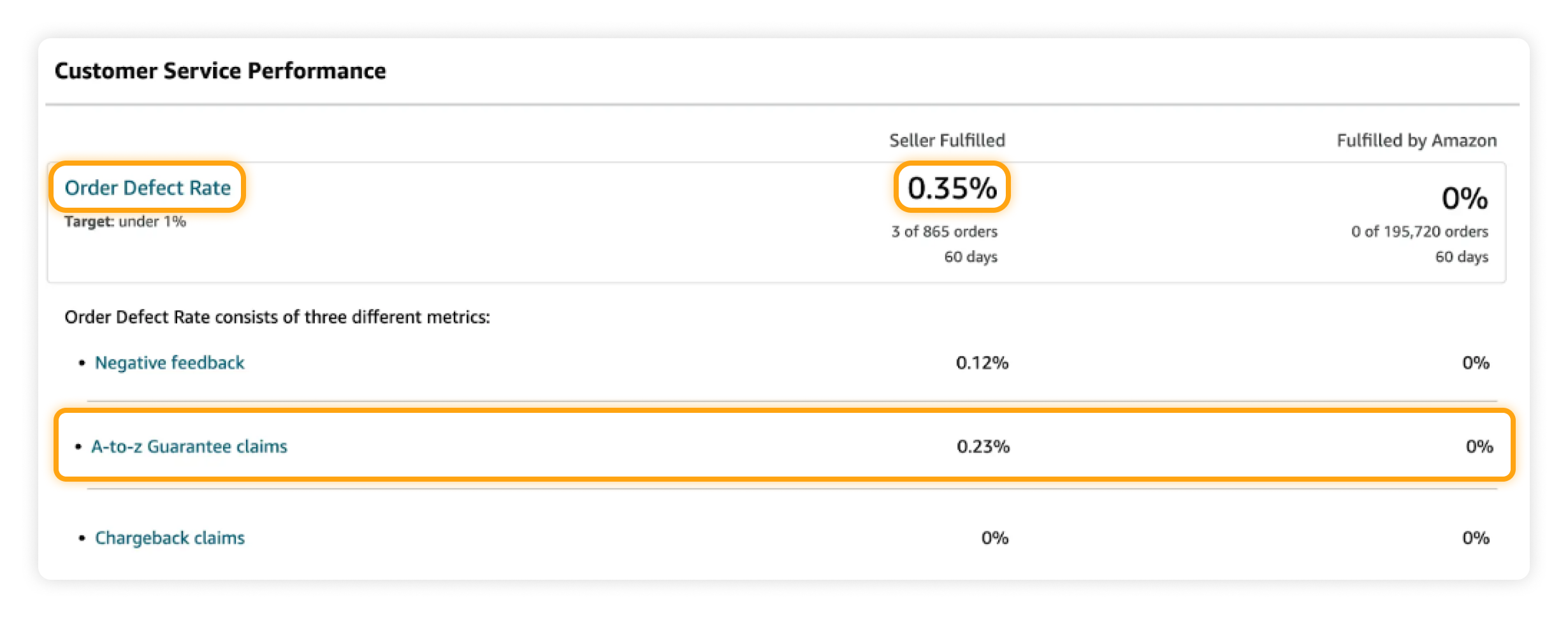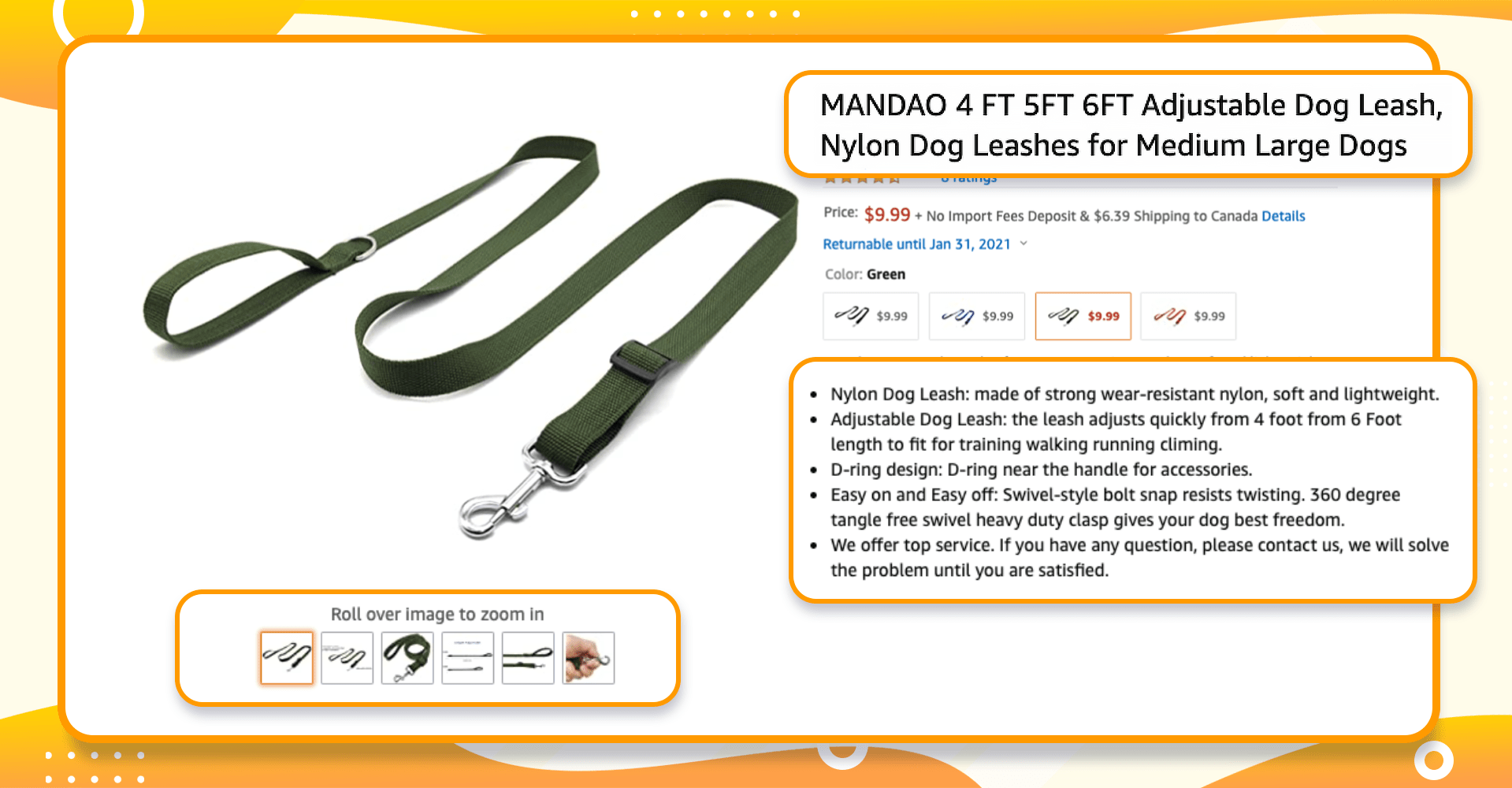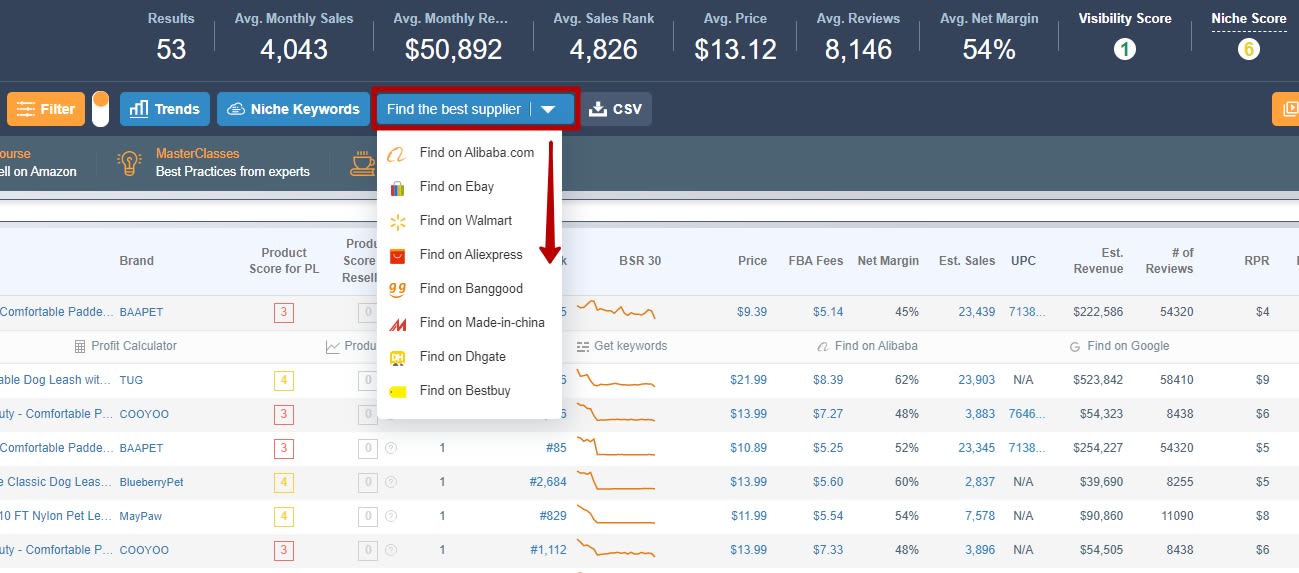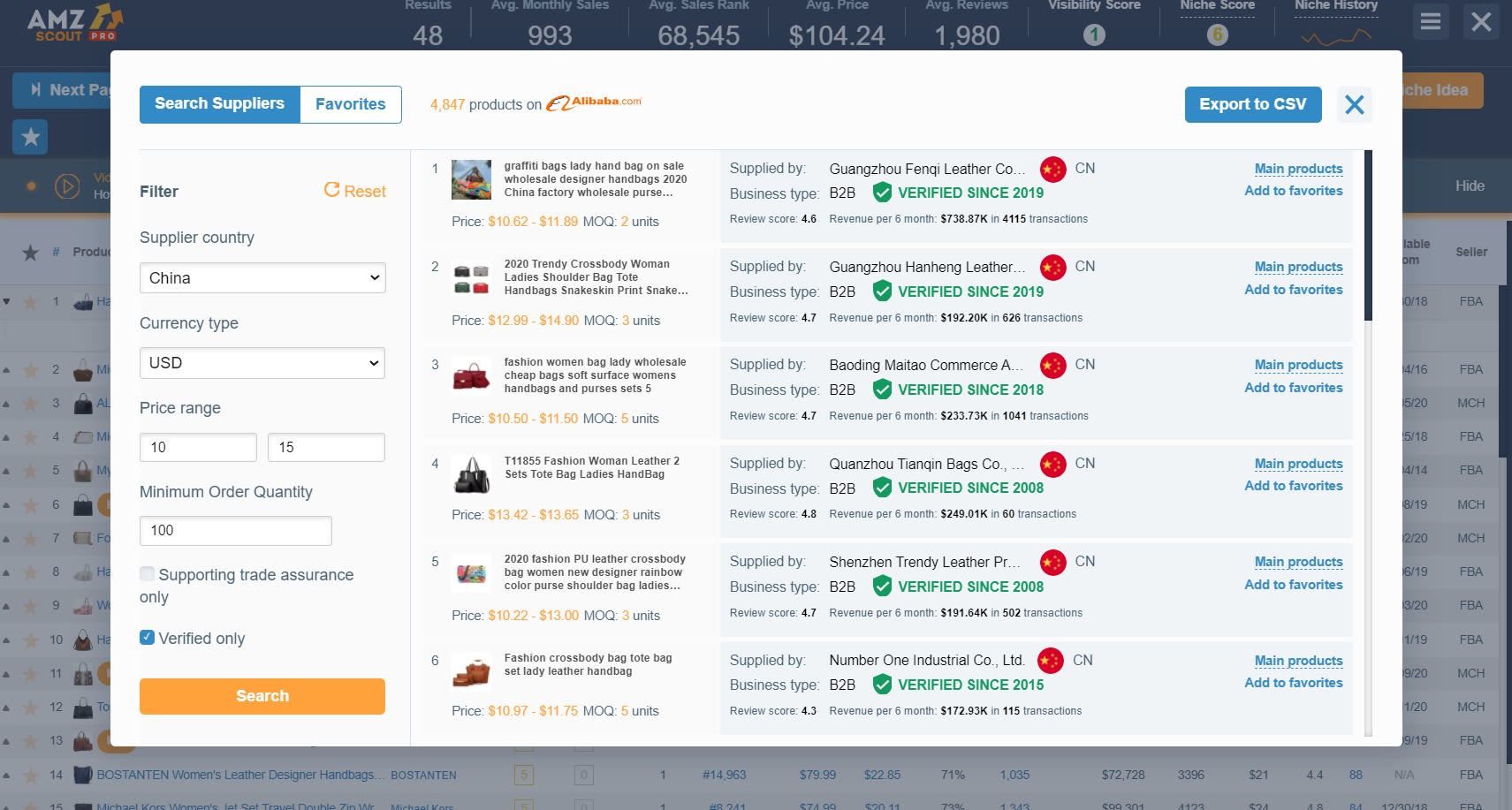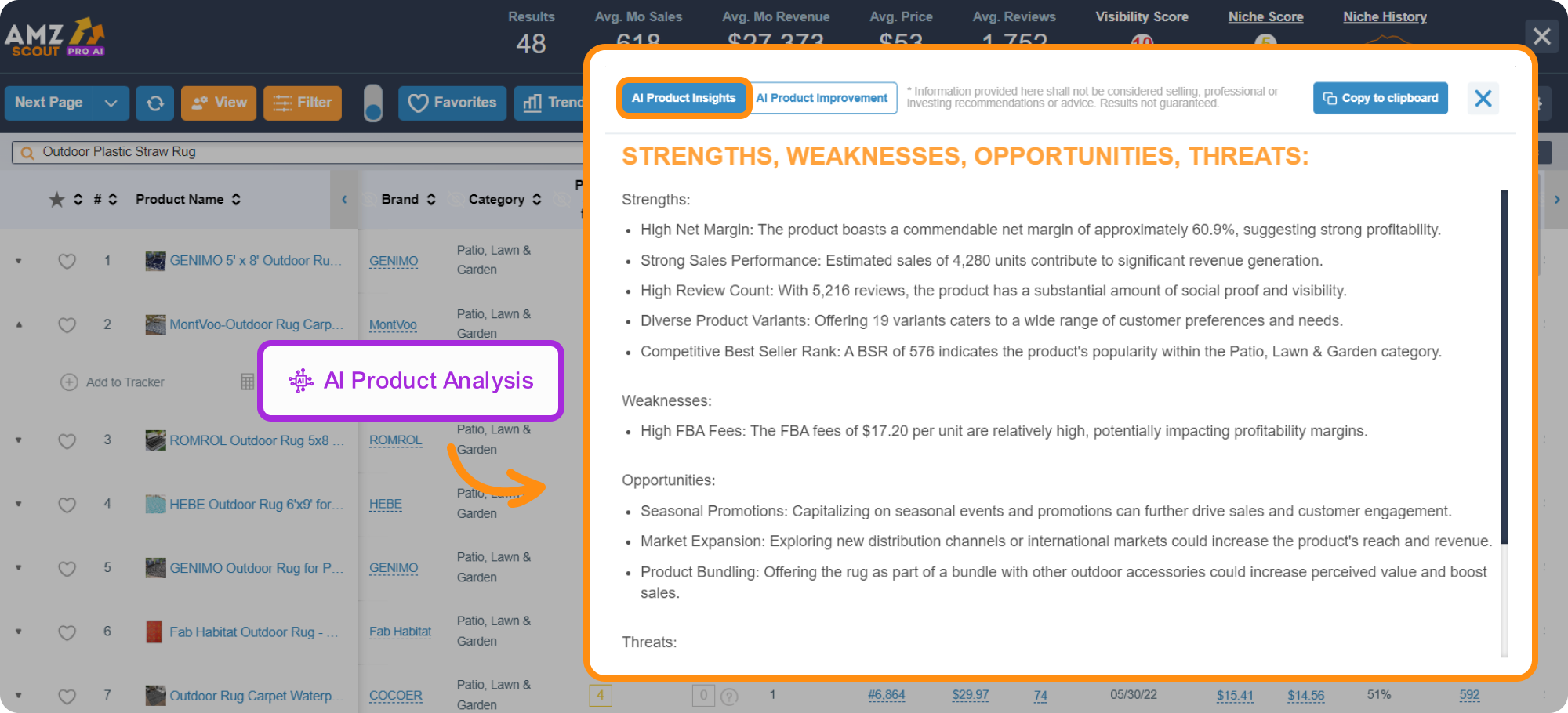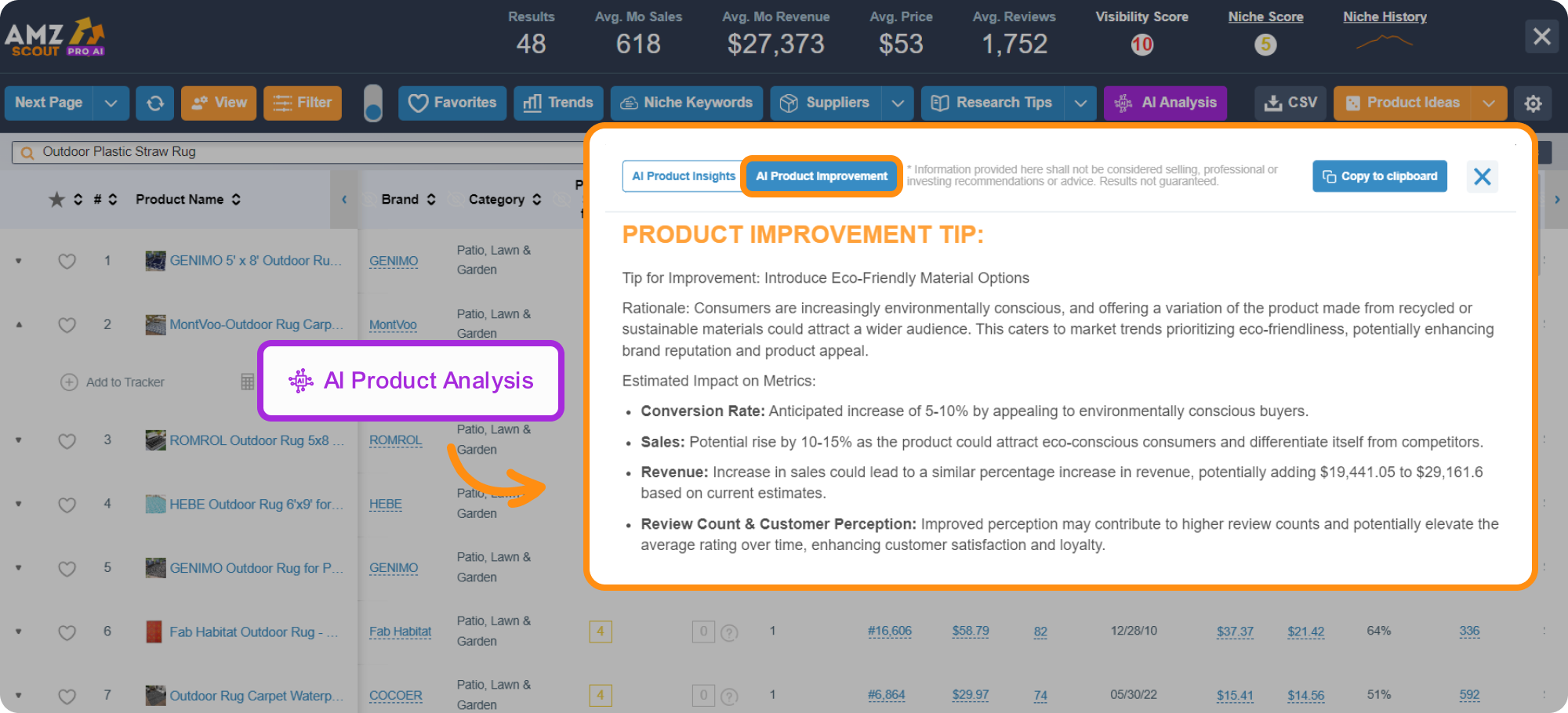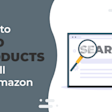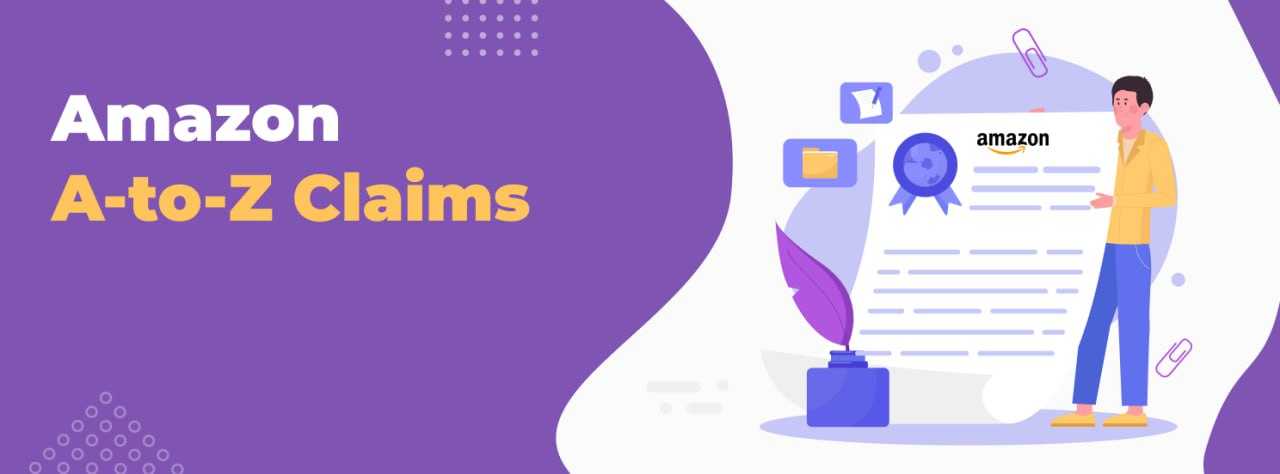
What is an A-to-z Claim on Amazon and How Do You Deal With It?
Amazon prioritizes the comfort and protection of its shoppers, offering an environment where trust is paramount. In order to maintain this trust, the company has developed programs like the A-to-z Guarantee, which ensures a positive shopping experience. It’s vital for sellers on Amazon to understand this program thoroughly , as it has a direct impact on their reputation, rankings, and overall success.
In this article, let’s explore what the A-to-z Guarantee is, how it works, and the steps sellers can take to minimize claims.
Table of contents
What is the A-to-z Guarantee?
The Amazon A-to-z Guarantee is a customer protection program designed to ensure that buyers are satisfied with their purchases and safeguards their money. This program allows customers to apply for a refund when they’re not satisfied with how they received the product. Refunds are typically processed within one to two weeks after the claim is approved, depending on the case.
In 2025, Amazon reported that less than 0.1% of total marketplace transactions result in an A-to-z claim, showing strong buyer confidence across more than 2 billion annual orders. Still, even this small percentage represents millions of cases each year, making the program an important safeguard for buyers and a key performance factor for sellers.
The program works in favor of the buyer who might cancel the order in the following scenarios:
Non-delivery: The order wasn’t received by the buyer.
Late delivery: The product was delivered after the promised time.
Not as described: The item differs significantly from the listing description.
Damaged goods: The product arrives broken or defective.
Seller unresponsiveness: The seller fails to address the issue promptly.
In all of these cases, the buyer will want their money back because the seller failed or denied to meet what was promised or fulfill the transaction as expected.
Ensuring that customer expectations are met is crucial in order to avoid these kinds of disputes and maintain trust, and the ability to appeal for customer service.
For sellers, understanding these situations is critical to mitigating claims, ensuring smooth operations on Amazon, and avoiding cancellations.
Why is the A-to-z Guarantee Important for Sellers?
The A-to-z Guarantee impacts sellers significantly by influencing their Order Defect Rate (ODR) directly. A high ODR can lower a seller’s visibility on Amazon, reduce sales potential, and even disqualify them from winning the coveted Buy Box. In 2025, Amazon data showed that sellers maintaining an ODR below 1% are 70% more likely to win the Buy Box and sustain long-term profitability. Maintaining a low ODR isn’t just about avoiding claims; it’s about building trust with buyers and ensuring a consistent reputation for reliability.
Additionally, unresolved A-to-z claims can result in financial losses for sellers and have a negative impact on customer satisfaction scores. These factors are crucial to Amazon’s performance metrics, which determine whether a seller will continue to thrive on the platform. To avoid these pitfalls, sellers must not only understand the A-to-z Guarantee, but also implement proactive strategies to prevent claims.
How to Prevent A-to-z Claims
The A-to-z Guarantee offers buyers peace of mind, but for sellers, it can pose challenges if claims aren’t managed effectively. Whatever negative events occur that affect the fulfillment of an order, this may impact a seller’s Amazon rankings and overall success, so preventing claims is essential for their reputation. By taking proactive steps as described below to address potential issues, sellers can safeguard their reputation and build trust with customers.
1. Ensure that Listing Details Are Accurate
One of the easiest ways to avoid claims is by providing accurate and detailed product information. Sellers need to verify that all titles, descriptions, keywords, and images in the listing align with the actual product. Misleading details are a major cause of customer dissatisfaction.
Periodic audits of your listings can help you identify and correct inaccuracies before they result in issues. Doing so demonstrates professionalism and minimizes the risk of A-to-z claims.
2. Work with Reliable Suppliers
A trustworthy supplier ensures product quality and timely delivery, both of which are essential for avoiding claims. When searching for suppliers, check their reviews, ratings, and history of meeting delivery deadlines, as you need to make sure they are reliable.
To simplify the supplier selection process, consider using tools like AMZScout PRO AI Extension, which provides essential data to help you assess suppliers’ reliability. Working with reputable suppliers reduces the likelihood of customers receiving defective or delayed items, thereby protecting your ODR. Here’s how you can find reliable suppliers through the PRO Extension:
Install the AMZScout PRO AI Extension.
Search on Amazon. Look up any product you want to explore on Amazon.
Activate the tool. Open the extension from the results page—the icon will appear bottom left. After clicking the button, you’ll see the dashboard featuring information about the products from your search.
Find suppliers. In the tool, click "Suppliers" —you’ll find it among the blue buttons above the tool’s search bar. Once you click it, the dropdown list will appear showing options, including Alibaba.
Filter your results. Narrow down the list of suppliers based on price and minimum order quantity. You can also filter the suppliers by a country.
Evaluate Supplier Ratings. Check and compare review scores to help you identify trustworthy options. You can also tap the ‘Trade assurance only’ and ‘Verified only’ checkmarks.
Save to your Favorites. Add the suppliers that best meet your criteria to your Favorites list for easy reference.
By following these steps, you can efficiently connect with suppliers that align with your product needs and business goals. And while utilizing this the tool saves you a significant amount of time, you also have to reach out to some of the suppliers you've chosen to get more details and make your final decision.
3. Manage Your Logistics Effectively
Efficient logistics play a key role in reducing claims. Sellers must ensure that their inventory is well-stocked, shipments are tracked properly, and products are packaged securely to prevent damage during transit. Missing delivery deadlines or failing to provide tracking information often results in claims being resolved in favor of the buyer, making proper planning and execution critical.
For FBM sellers, using Amazon Buy Shipping is highly recommended, as this not only simplifies shipping by providing tracking, but also protects sellers from A-to-z claims related to delayed or lost deliveries, as Amazon takes responsibility in such cases. FBA sellers have this advantage built-in, as Amazon handles the entire logistics process.
4. Deliver Excellent Customer Service
Responsive and helpful customer service is vital for addressing buyers’ concerns before they escalate into claims. Sellers should respond to emails and inquiries promptly, ideally within 24 hours.
5. Choose Products with Minimal Risk
Selecting the right products is a critical decision in avoiding customer complaints and reducing A-to-z claims. To minimize risks, sellers should focus on niches with steady demand and low return rates. They also need to choose simple products, as this lowers the risk that it will break or that the buyer will struggle to figure out how to use it.
It's also important to evaluate product reviews, ratings, and competitor performance to ensure that the product meets customer expectations.
Tools like the AMZScout PRO AI can simplify this process by analyzing niches, providing data on similar products, and highlighting their performance ratings. Here’s how:
Install the AMZScout PRO AI Extension. Begin by adding the AMZScout PRO AI Extension to your browser.
Search for a product on Amazon. Navigate to Amazon and type in the name of a product (like“sofa topper”).
Launch the AMZScout PRO AI Extension. After opening the product page, click the AMZScout PRO AI Extension icon in your browser’s toolbar. This will allow you to access comprehensive data about the product.
Evaluate product risks. Utilize the AI Product Analysis feature to see the strengths and weaknesses of the product. To analyze a certain product, click on it, then tap ‘AI Product Analysis’ under the product bar. You can evaluate the potential risks connected with selling this product by assessing whether you can mitigate any hidden drawbacks while leveraging available opportunities.
Generate ideas for improving your product. For Private Label sellers: go to the ‘AI Product Improvement’ section within the AI Product Analysis tool. This enables you to view tailored recommendations for product enhancements. These suggestions detail how specific changes can improve your item’s competitiveness and profitability.
Check the product rating. The ‘Product Rating’ column provides an overview of the niche and each product, so you get an idea about how buyers rate them.
Assess additional vital information. In addition, you can also review other important data, such as product sales history, price changes, profitability, and competition levels. While this doesn’t affect complaints directly, it’s crucial for selecting profitable products.
By thoroughly researching the market and leveraging tools like PRO AI, sellers can reduce the likelihood of issues and enhance their product offerings for greater customer satisfaction.
When sellers focus on these areas, they can reduce the likelihood of A-to-z claims significantly. Addressing common pain points proactively creates a better experience for buyers and strengthens your standing as a seller. Prioritizing accuracy, reliability, and responsiveness not only prevents claims but also paves the way for long-term success on Amazon.
Building a reputation for reliable customer service can prevent misunderstandings and resolve issues amicably. Happy customers are less likely to file claims, even if something goes wrong.
If you still have any questions, we provide additional answers to common questions below.
Conclusion
The A-to-z Guarantee is a cornerstone of Amazon’s commitment to customer satisfaction. For sellers, this can be a double-edged sword: while it builds buyer trust, mishandled claims can harm seller performance. In order to succeed, sellers must focus on creating accurate listings, work with reliable suppliers, streamline logistics, and deliver top-notch customer service. By managing these areas proactively, sellers can protect their metrics, win the Buy Box, and thrive in the competitive Amazon marketplace.
FAQs
Can an Amazon seller refuse to issue a refund?
While the seller has the option to refuse to refund a request that doesn't meet Amazon’s policy, the buyer may escalate the matter by filing an A-to-z claim. In such cases, Amazon makes the final decision, often favoring the buyer if the issue is legitimate.
Can a seller file an A-to-z Claim?
The A-to-z Guarantee is exclusively for buyers to protect their purchases, it's not something that vendors can submit. If a seller needs to address a grievance, they have other available avenues, such as contacting Amazon Seller Support.
What products should I avoid selling to minimize risks?
Avoid selling controversial or high-return-risk products, such as those that may be prone to damage during shipping or items with vague descriptions.
What happens when Amazon files a claim against a seller?
If a claim is filed, Amazon will evaluate the evidence provided by both the buyer and seller. If the claim is valid, Amazon may issue a refund to the buyer and withdraw the amount from the seller’s account. Accruing multiple claims can hurt a seller’s metrics, which may potentially impact the health of their account.
